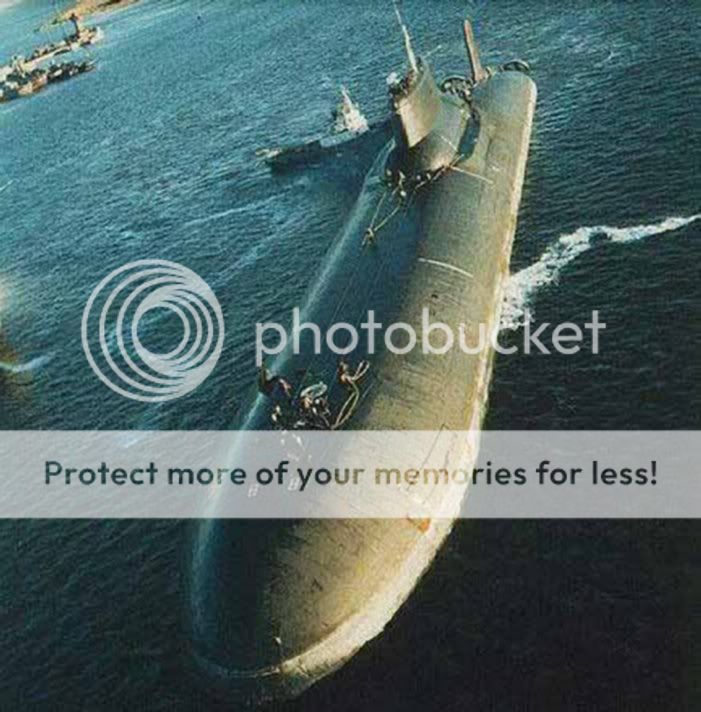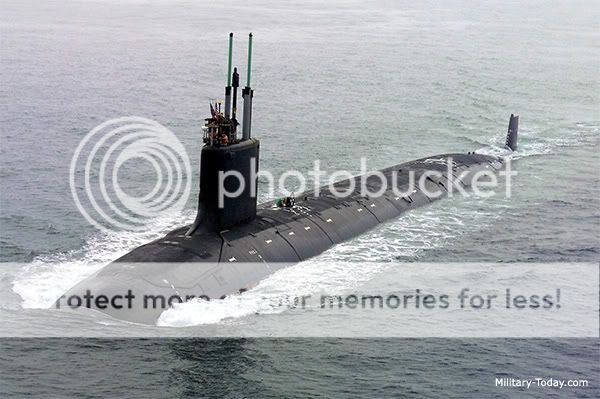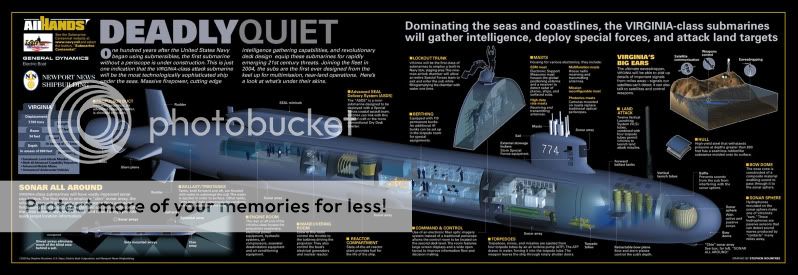- Joined
- Feb 19, 2009
- Messages
- 535
- Likes
- 16
I made a list of all the Latest SSBN’s and also put in a brief “synopsis” of their capabilities and size so as to help us better compare India’s new submarine with the Established players. This is just a brief list I made in a couple of hours, I will look to expand it more in the near future and delve into more technical aspects. In particular I would like to talk more about the different types of reactors and also do a comparison of the different types of SLBM’s that are present on these boats.

Ohio class is the 6th Generation nuclear powered SSBN for the United States navy and is the 2nd largest submarine ever built after the Russian Typhoon class.
· Operational on 11 November 1981
· Displaces 16,764 Tons Surfaced and 18,750 Tons Submerged, Depth of 1000ft
· 170 meter Length with a 13meter Beam
· Powered by 1 S8G reactor (Generation II Pressurized Water Reactor), output Classified. Capable of 25+ knots submerged
· 24* UGM-133 Trident II (Capable of 12 MIRV; however due to treaty carry 4-5 warheads) with up to 12,000km range depending on Warhead (W88 – 475kt yield; W76- 100kt yield)
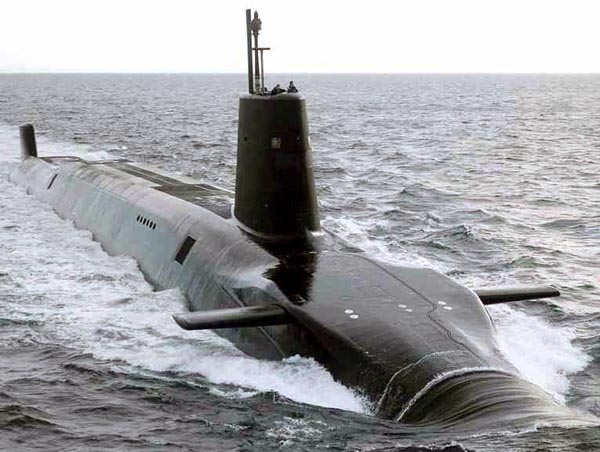
Vanguard class is the 2nd Generation nuclear powered SSBN for the English Navy
· Operational on 14 August 1993
· 17,560 Tons submerged,
· 149.9 m with a beam: 12.8 m and Draught: 12 m
· Powered by 1*PWR-2 Reactor (Generation II Pressurized Water Reactor), output Classified. Capable of about 25knots
· 16* UGM-133 Trident II (Believed to carry up to 128 missiles)

·
Borei Class is the 7th generation Nuclear powered SSBN for the Russian Navy ( 8th SSBN- Golf class was a Diesel-Electric powered SSBN)*
· Operational on 15th April 2007
· Displaces 14,720 Tons surfaced and 24,000 tons submerged
· 170 meter length, 13.5m beam with a 10m Draught
· Powered by 1*OK-650B reactor (Generation II Pressurized Water Reactor), Capable of 29knots
· 16* Bulava, NATO Designation- SS-NX-30 (6-10 MIRV) with a range of over 8000KM
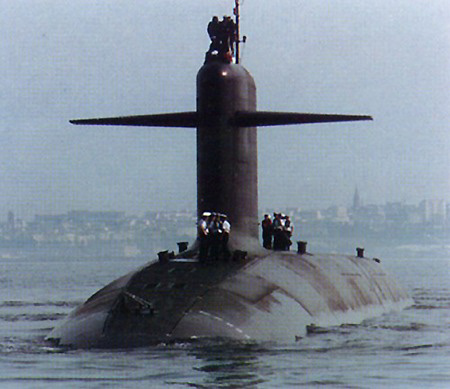
Triomphant is the 2nd generation nuclear powered SSBN for French Navy.
· Operational on 21 March 1997
· Displaces 12,640 Ton surfaced and 14,335 Ton submerged
· 138 Meter in length, 12.5 meter Beam and 10.6m Draught
· Powered by K15 nuclear Reactor (Generation II Pressurized Water Reactor) producing 150MW capable of over 25knots
· 16* M45 SLBM (6 MIRV) with up to 6000km range

Type 94 is the second Generation of Chinese Nuclear powered SSBN* and is based on the Type 93 Nuclear powered attack Submarine
· Believed to become operational soon
· Displaces 8,000t Surfaced and 9,000tons submerged
· 133m Length
· Powered by unknown nuclear reactor, >58MW (Believed to be a generation II Pressurized Water Reactor), capable of 20+ knots
· 12*JL-2; NATO Designation – CCS-N-4Mod0 (3-4 MIRV) with a range of over 8000KM
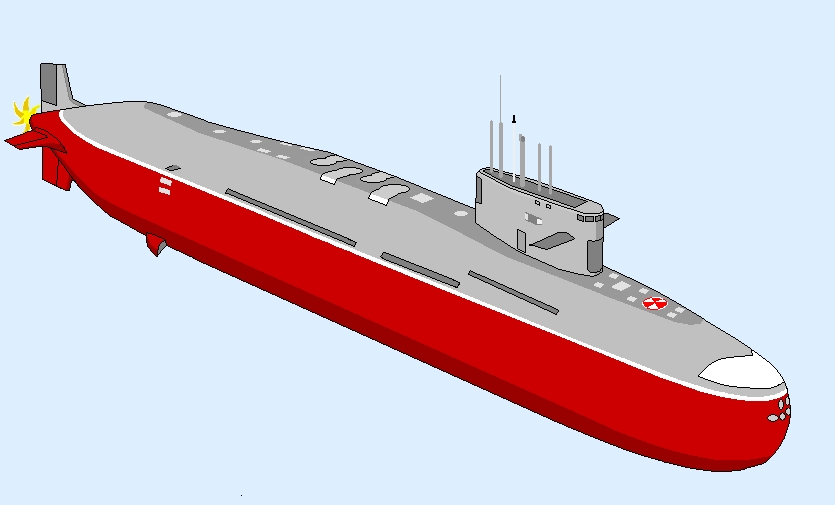
Airhant is the 1st generation of nuclear powered SSBN for Indian Navy
· Believed to become operational around 2012-2014
· Displaces 6000Tons
· 110m Length, 10mBeam, 9m Draft
· Powered by a generation II Pressurized Water Reactor outputting 80MW, with a top speed of 24knots
· 12*K15, Sagarika with a range of 750KM – NO MIRV ::::::: 4* K-X, Agni III SLBM with a range of 5500 km- MIRV possible *
* Note: Soviet Navy heavily modified the Delta I class and the Yankee I class SSBN’s and I included them in my list. However with the exception of the Delta II and Yankee II class of submarines the Borei is the 6th Generation of SSBN/
5fth Generation of Nuclear Powered SSBN that has been designed ground up for the Russian navy
*Note: Type 96 Nuclear powered SSBN is already believed to be in development
*Agni-III variants to have MIRV capabilites.
Judging by the size of the Airhant it seems closer in size to a SSN as opposed to a SSBN. There have also been reports that it shares a lot of similarities of the Charlie-II class of submarines that was leased to India and also shares some similarities with the Akula class namely the towed array on the aft sail is like that of a Akula. With that said, the Airhant class is severely underpowered when comparing it to the existing SSBN’s in service, in fact the 80MW reactor is substantially smaller than the 190MW reactor on the Akula. Both the top speed and the displacement of the Airhant put it close to the Charlie-II submarines. What is worthy of note is that every country that has a SSBN in service originally conceived a SSN and then modified it to an SSBN. However that seems not to be the case with India.

Ohio class is the 6th Generation nuclear powered SSBN for the United States navy and is the 2nd largest submarine ever built after the Russian Typhoon class.
· Operational on 11 November 1981
· Displaces 16,764 Tons Surfaced and 18,750 Tons Submerged, Depth of 1000ft
· 170 meter Length with a 13meter Beam
· Powered by 1 S8G reactor (Generation II Pressurized Water Reactor), output Classified. Capable of 25+ knots submerged
· 24* UGM-133 Trident II (Capable of 12 MIRV; however due to treaty carry 4-5 warheads) with up to 12,000km range depending on Warhead (W88 – 475kt yield; W76- 100kt yield)

Vanguard class is the 2nd Generation nuclear powered SSBN for the English Navy
· Operational on 14 August 1993
· 17,560 Tons submerged,
· 149.9 m with a beam: 12.8 m and Draught: 12 m
· Powered by 1*PWR-2 Reactor (Generation II Pressurized Water Reactor), output Classified. Capable of about 25knots
· 16* UGM-133 Trident II (Believed to carry up to 128 missiles)

·
Borei Class is the 7th generation Nuclear powered SSBN for the Russian Navy ( 8th SSBN- Golf class was a Diesel-Electric powered SSBN)*
· Operational on 15th April 2007
· Displaces 14,720 Tons surfaced and 24,000 tons submerged
· 170 meter length, 13.5m beam with a 10m Draught
· Powered by 1*OK-650B reactor (Generation II Pressurized Water Reactor), Capable of 29knots
· 16* Bulava, NATO Designation- SS-NX-30 (6-10 MIRV) with a range of over 8000KM

Triomphant is the 2nd generation nuclear powered SSBN for French Navy.
· Operational on 21 March 1997
· Displaces 12,640 Ton surfaced and 14,335 Ton submerged
· 138 Meter in length, 12.5 meter Beam and 10.6m Draught
· Powered by K15 nuclear Reactor (Generation II Pressurized Water Reactor) producing 150MW capable of over 25knots
· 16* M45 SLBM (6 MIRV) with up to 6000km range

Type 94 is the second Generation of Chinese Nuclear powered SSBN* and is based on the Type 93 Nuclear powered attack Submarine
· Believed to become operational soon
· Displaces 8,000t Surfaced and 9,000tons submerged
· 133m Length
· Powered by unknown nuclear reactor, >58MW (Believed to be a generation II Pressurized Water Reactor), capable of 20+ knots
· 12*JL-2; NATO Designation – CCS-N-4Mod0 (3-4 MIRV) with a range of over 8000KM

Airhant is the 1st generation of nuclear powered SSBN for Indian Navy
· Believed to become operational around 2012-2014
· Displaces 6000Tons
· 110m Length, 10mBeam, 9m Draft
· Powered by a generation II Pressurized Water Reactor outputting 80MW, with a top speed of 24knots
· 12*K15, Sagarika with a range of 750KM – NO MIRV ::::::: 4* K-X, Agni III SLBM with a range of 5500 km- MIRV possible *
* Note: Soviet Navy heavily modified the Delta I class and the Yankee I class SSBN’s and I included them in my list. However with the exception of the Delta II and Yankee II class of submarines the Borei is the 6th Generation of SSBN/
5fth Generation of Nuclear Powered SSBN that has been designed ground up for the Russian navy
*Note: Type 96 Nuclear powered SSBN is already believed to be in development
*Agni-III variants to have MIRV capabilites.
Judging by the size of the Airhant it seems closer in size to a SSN as opposed to a SSBN. There have also been reports that it shares a lot of similarities of the Charlie-II class of submarines that was leased to India and also shares some similarities with the Akula class namely the towed array on the aft sail is like that of a Akula. With that said, the Airhant class is severely underpowered when comparing it to the existing SSBN’s in service, in fact the 80MW reactor is substantially smaller than the 190MW reactor on the Akula. Both the top speed and the displacement of the Airhant put it close to the Charlie-II submarines. What is worthy of note is that every country that has a SSBN in service originally conceived a SSN and then modified it to an SSBN. However that seems not to be the case with India.


